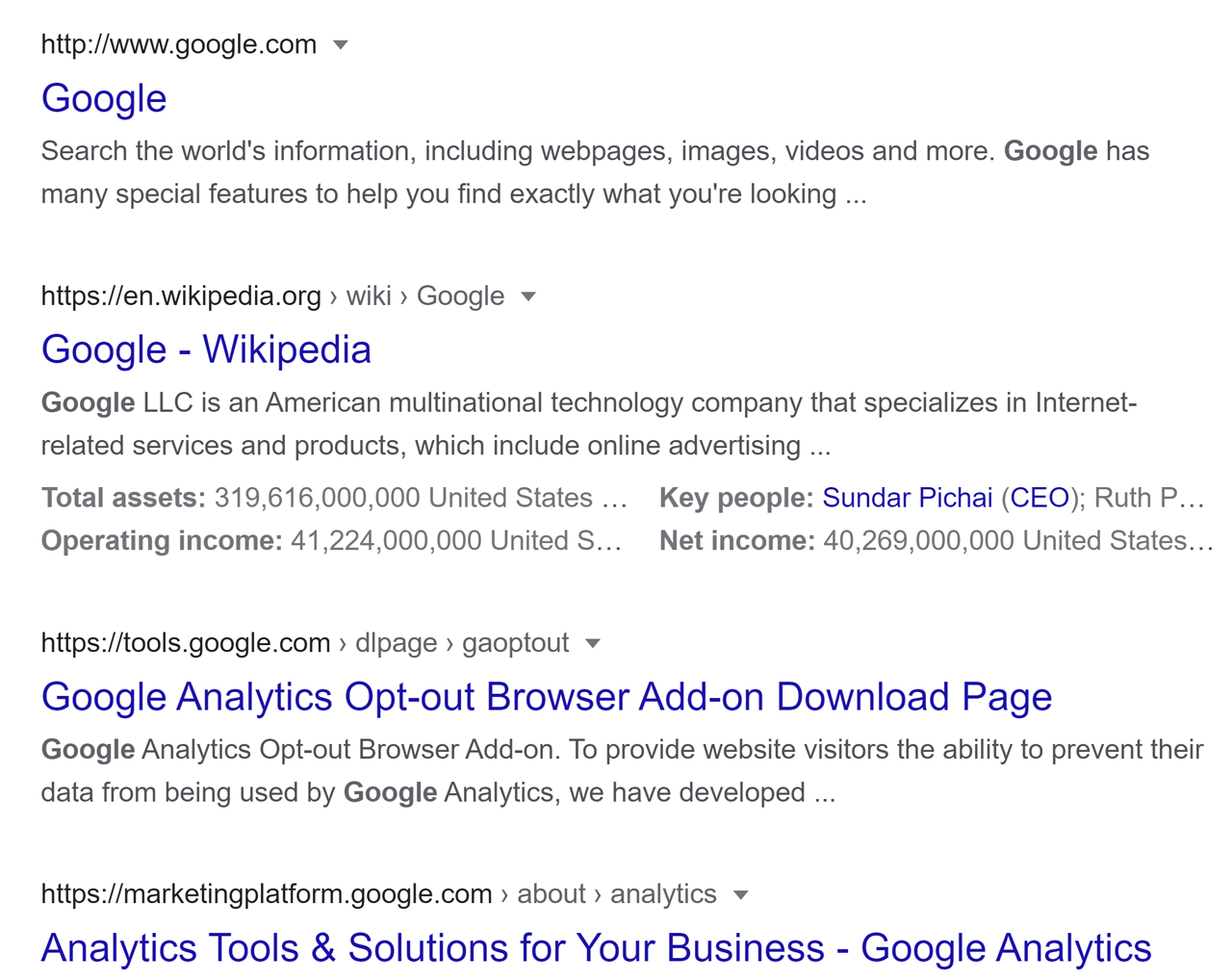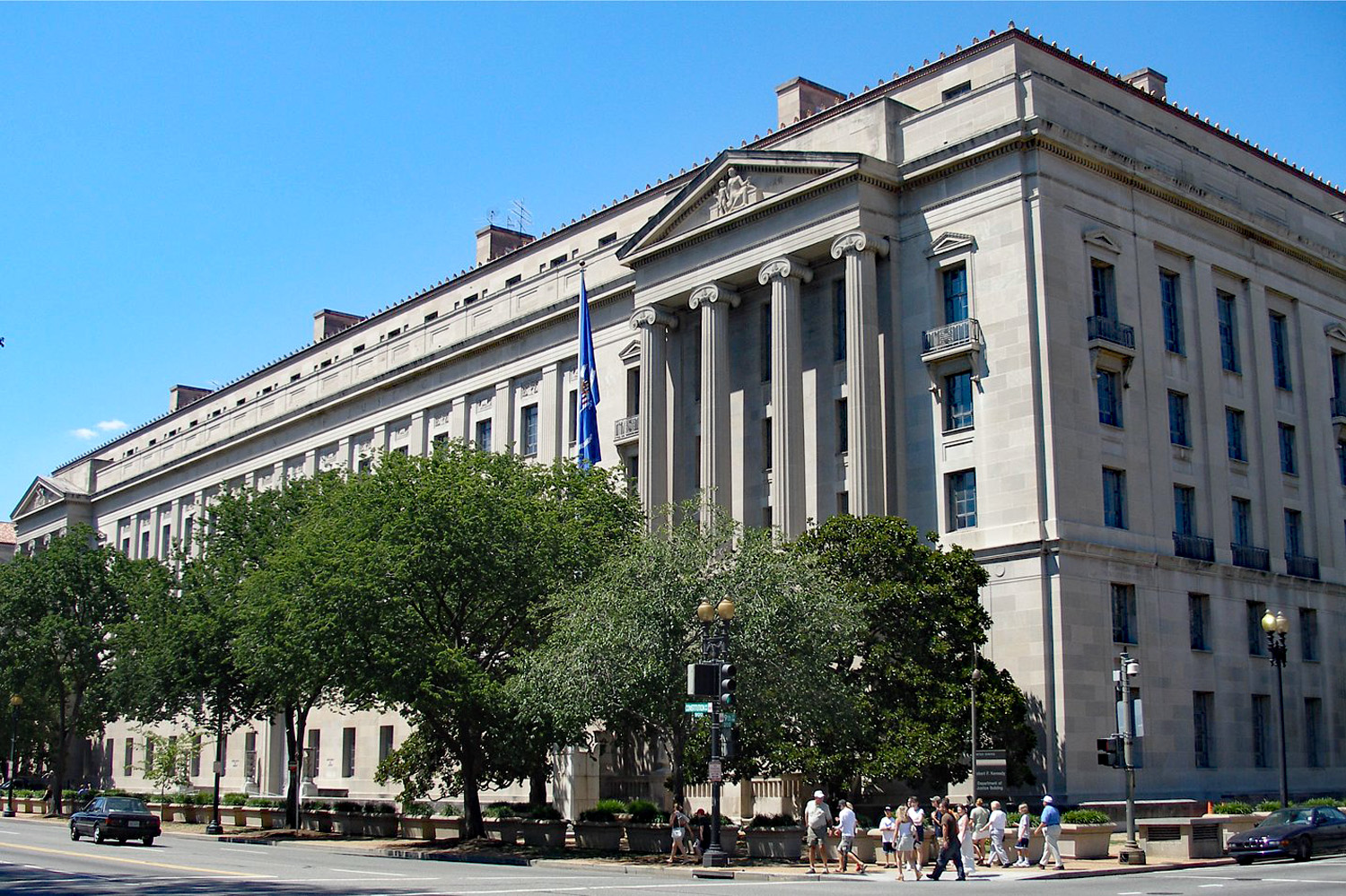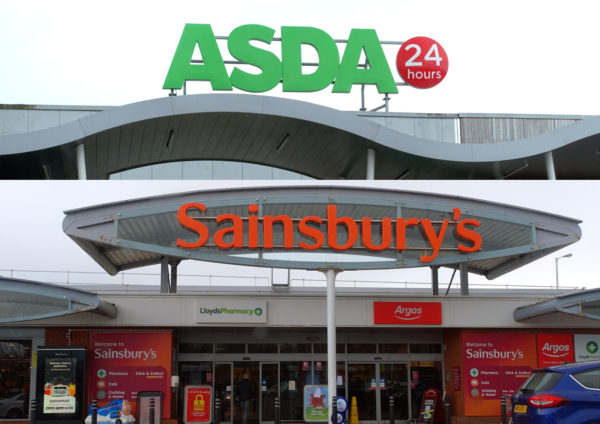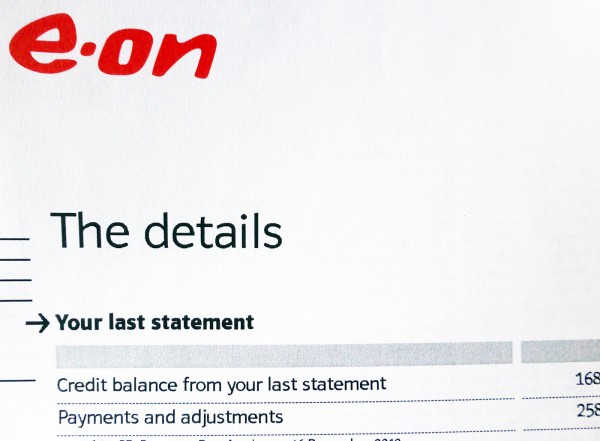 With the coronavirus pandemic having reached almost every country in the world, the impact on the global economy has been catastrophic. Governments have struggled balancing the spread of the virus and keeping the economy afloat. This has left businesses counting the costs of various control measures and numerous lockdowns. The crisis has particularly affected small and medium-sized enterprises (SMEs), causing massive job losses and longer-term economic scars. Among these is an increase in the market power held by dominant firms as they emerge even stronger while smaller rivals fall away.
With the coronavirus pandemic having reached almost every country in the world, the impact on the global economy has been catastrophic. Governments have struggled balancing the spread of the virus and keeping the economy afloat. This has left businesses counting the costs of various control measures and numerous lockdowns. The crisis has particularly affected small and medium-sized enterprises (SMEs), causing massive job losses and longer-term economic scars. Among these is an increase in the market power held by dominant firms as they emerge even stronger while smaller rivals fall away.
It is feared that with the full effects of the pandemic not yet realised, there may well be a wave of bankruptcies that will hit SMEs harder than larger firms, particularly in the most affected industries. Larger firms are most likely to be more profitable in general and more likely to have access to finance. Firm-level analysis using Orbis data, which includes listed and private firms, suggests that the pandemic-driven wave of bankruptcies will lead to increases in industry concentration and market power.
What is market power?
 A firm holds a dominant position if its power enables it to operate within the market without taking account of the reaction of its competitors or of intermediate or final consumers. The key role of competition authorities around the world is to protect the public interest, particularly against firms abusing their dominant positions.
A firm holds a dominant position if its power enables it to operate within the market without taking account of the reaction of its competitors or of intermediate or final consumers. The key role of competition authorities around the world is to protect the public interest, particularly against firms abusing their dominant positions.
The UK’s competition authority, the Competition and Markets Authority (CMA) states:
Market power arises where an undertaking does not face effective competitive pressure. …Market power is not absolute but is a matter of degree; the degree of power will depend on the circumstances of each case. Market power can be thought of as the ability profitably to sustain prices above competitive levels or restrict output or quality below competitive levels. An undertaking with market power might also have the ability and incentive to harm the process of competition in other ways; for example, by weakening existing competition, raising entry barriers, or slowing innovation.
It can be hard to distinguish between a rapidly growing business and growing concentration of market power. In a pandemic, these distinctions can become even more difficult to discern, since there really is a deep need for a rapid deployment of capital, often in distressed situations. It is also not always evident whether the attempt to grow is driven by the need for more productive capacity, or by the desire to engage in financial engineering or to acquire market power.
It may be the case that, as consumers, we simply have no choice but to depend on various monopolies in a crisis, hoping that they operate in the public interest or that the competition authorities will ensure that they do so. With Covid-19 for example, economies will have entered the pandemic with their existing institutions, and therefore the only way to operate may be through channels controlled by concentrated power. Market dominance can occur for what seem to be good, or least necessary, reasons.
Why is market power a problem?
 Why is it necessarily a problem if a successful company grows bigger than its competitors through hard work, smart strategies, and better technology adoption? It is important to recognise that increases in market power do not always mean an abuse of that market power. Just because a company may dominate the market, it does not mean there is a guaranteed negative impact on the consumer or industry. There are many advantages to a monopoly firm and, therefore, it can be argued that the existence of a market monopoly in itself should not be a cause of concern for the regulator. Unless there is evidence of past misconduct of dominance, which is abusive for the market and its stakeholders, some would argue that there is no justification for any involvement by regulators at all.
Why is it necessarily a problem if a successful company grows bigger than its competitors through hard work, smart strategies, and better technology adoption? It is important to recognise that increases in market power do not always mean an abuse of that market power. Just because a company may dominate the market, it does not mean there is a guaranteed negative impact on the consumer or industry. There are many advantages to a monopoly firm and, therefore, it can be argued that the existence of a market monopoly in itself should not be a cause of concern for the regulator. Unless there is evidence of past misconduct of dominance, which is abusive for the market and its stakeholders, some would argue that there is no justification for any involvement by regulators at all.
However, research by the International Monetary Fund concluded that excessive market power in the hands of a few firms can be a drag on medium-term growth, stifling innovation and holding back investment. Given the severity of the economic impact of the pandemic, such an outcome could undermine the recovery efforts by governments. It could also prevent new and emerging firms entering the market at a time when dynamism is desperately needed.
The ONS defines business dynamism as follows:
Business dynamism relates to measures of birth, growth and decline of businesses and its impact on employment. A steady rate of business creation and closure is necessary for an economy to grow in the long-run because it allows new ideas to flourish.
A lack of business dynamism could lead to a stagnation in productivity and wage growth. It also affects employment through changes in job creation and destruction. In this context, the UK’s most recent unemployment rate was 5%. This is the highest figure for five years and is predicted to rise to 6.5% by the end of 2021. Across multiple industries, there is now a trend of falling business dynamism with small businesses failing to break out of their local markets and start-up companies whose prices are undercut by a big rival. This creates missed opportunities in terms of growth, job creation, and rising incomes.
There has been a rise in mergers and acquisitions, especially amongst dominant firms, which is contributing to these trends. Again, it is important to recognise that mergers and acquisitions are not in themselves a problem; they can yield cost savings and produce better products. However, they can also weaken incentives for innovation and strengthen a firm’s ability to charge higher prices. Analysis shows that mergers and acquisitions by dominant firms contribute to an industry-wide decline in business dynamism.
Changes in market power due to the pandemic
The IMF identifies key indicators for market power, such as the percentage mark-up of prices over marginal cost, and the concentration of revenues among the four biggest players in a sector. New research shows that these key indicators of market power are on the rise. It is estimated that due to the pandemic, this increase in market dominance could now increase in advanced economies by at least as much as it did in the fifteen years to the end of 2015.
 Global price mark-ups have risen by more than 30%, on average, across listed firms in advanced economies since 1980. And in the past 20 years, mark-up increases in the digital sector have been twice as steep as economy-wide increases. Increases in market power across multiple industries caused by the pandemic would exacerbate a trend that goes back over four decades.
Global price mark-ups have risen by more than 30%, on average, across listed firms in advanced economies since 1980. And in the past 20 years, mark-up increases in the digital sector have been twice as steep as economy-wide increases. Increases in market power across multiple industries caused by the pandemic would exacerbate a trend that goes back over four decades.
It could be argued that firms enjoying this increase in market share and strong profits is just the reward for their growth. Such success if often a result of innovation, efficiency, and improved services. However, there are growing signs in many industries that market power is becoming entrenched amid an absence of strong competitors for dominant firms. It is estimated that companies with the highest mark-ups in a given year, have an almost 85 percent chance of remaining a high mark-up firm the following year. According to experts, some of these businesses have created entry barriers – regulatory or technology driven – which are incredibly high.
Professor Jayant R. Varma, a member of the MPC of the Reserve Bank of India (RBI), observed that in several sectors characterised by an oligopolistic core and a competitive periphery, the oligopolistic core has weathered the pandemic and it is the competitive periphery that has been debilitated. Rising profits and profit margins, improving capacity utilisation and lack of new capacity additions create ripe conditions for the oligopolistic core to start exercising pricing power.
The drivers and macroeconomic implications of such rises in market power are likely to differ across economies and individual industries. Even in those industries that benefited from the crisis, such as the digital sector, dominant players are among the biggest winners. The technology industry has been under the microscope in recent years, and increasingly the big tech firms are under scrutiny from regulators around the world. The market disruptors that displaced incumbents two decades ago have become increasingly dominant players that do not face the same competitive pressures from today’s would-be disruptors. The pandemic is adding to powerful underlying forces such as network effects and economies of scale and scope.
 A new regulator that aims to curb this increasing dominance of the tech giants has been established in the UK. The Digital Markets Unit (DMU) will be based inside the Competition and Markets Authority. The DMU will first look to create new codes of conduct for companies such as Facebook and Google and their relationship with content providers and advertisers. Business Secretary Kwasi Kwarteng said the regime will be ‘unashamedly pro-competition’.
A new regulator that aims to curb this increasing dominance of the tech giants has been established in the UK. The Digital Markets Unit (DMU) will be based inside the Competition and Markets Authority. The DMU will first look to create new codes of conduct for companies such as Facebook and Google and their relationship with content providers and advertisers. Business Secretary Kwasi Kwarteng said the regime will be ‘unashamedly pro-competition’.
Policy Responses
The additions in regulation in the UK fall in line with the guidance from the IMF. It recommends that adjustments to competition-policy frameworks need to be made in order to minimise the adverse effects of market dominance. Such adjustments must, however, be tailored to national circumstances, both in general and to address the specific challenges raised by the surge of the digital economy.
It recommends the following five actions:
- Competition authorities should be increasingly vigilant when enforcing merger control. The criteria for competition authorities to review a deal should cover all relevant cases – including acquisitions of small players that may grow to compete with dominant firms.
- Second, competition authorities should more actively enforce prohibitions on the abuse of dominant positions and make greater use of market investigations to uncover harmful behaviour without any reported breach of the law.
- Greater efforts are needed to ensure competition in input markets, including labour markets.
- Competition authorities should be empowered to keep pace with the digital economy, where the rise of big data and artificial intelligence is multiplying incumbent firms’ advantage. Facilitating data portability and interoperability of systems can make it easier for new firms to compete with established players.
- Investments may be needed to further boost sector-specific expertise amid rapid technological change.
Conclusion
The crisis has had a significant impact on all businesses, with many shutting their doors for good. However, there has been a greater negative impact on SMEs. Even in industries that have flourished from the pandemic, it is the dominant firms that have emerged the biggest winners. There is concern that the increasing market power will remain embedded in many economies, stifling future competition and economic growth. While the negative effects of increased market power have been moderate so far, the findings suggest that competition authorities should be increasingly vigilant to ensure that these effects do not become more harmful in the future.
Reviews of competition policy frameworks have already begun in some major economies. Young, high-growth firms that innovate and create high-quality jobs deserve a level playing field and a fair chance to succeed. Support directed to SMEs is important, as many small firms have been unable to benefit from government programmes designed to help firms access financing during the pandemic. Policymakers should act now to prevent a further, sharp rise in market power that could hold back the post-pandemic recovery.
Articles
Podcast
Official documents
Questions
- What are the arguments for and against the assistance of a monopoly?
- What barriers to entry may exist that prevent small firms from entering an industry?
- What policies can be implemented to limit market power?
- Define and explain market dynamism.
 In recent years, US tech companies have faced increased scrutiny in Washington over their size and power. Despite the big tech firms in America being economically robust, seemingly more so than any other sector, they are also more politically vulnerable. This potential vulnerability is present regardless of the recent election result.
In recent years, US tech companies have faced increased scrutiny in Washington over their size and power. Despite the big tech firms in America being economically robust, seemingly more so than any other sector, they are also more politically vulnerable. This potential vulnerability is present regardless of the recent election result.
Both the Democrat and Republican parties are thinking critically about monopoly power and antitrust issues, where ‘antitrust’ refers to the outlawing or control of oligopolistic collusion. Despite the varied reasons across different parts of the political spectrum, the increased scrutiny over big tech companies is bipartisan.
Rising monopoly power
Monopoly power occurs when a firm has a dominant position in the market. A pure monopoly is when one firm has a 100% share of the market. A firm might be considered to have monopoly power with more than a 25% market share.
If there is a rise in market concentration, it tends to hurt blue-collar workers, such as those employed in factories, more than everyone else. Research, from the University of Chicago, studied what happens to particular classes of workers when companies increasingly dominate a market and have more power to raise prices. The study found that those workers that make things tend to be left worse off, while the workers who sell, market or design things gain. When companies have more pricing power, they make fewer products and sell each one for a higher profit margin. In that case, it’s far more valuable to a company to be an employee working in so-called expansionary positions, such as marketing, than in production jobs, such as working on a factory line — because there’s less production to be done and more salesmanship.
Monopoly power under Trump Vs Biden
 In February, President Trump and his economic team saw no need to rewrite the federal government’s antitrust rules, drawing a battle line with the Democrats on an issue that has increasingly drawn the attention of economists, legal scholars and other academics. In their annual Economic Report of the President, Mr. Trump and his advisers effectively dismissed research that found large American companies increasingly dominate industries like telecommunications and tech, stifling competition and hurting consumers. At the time the Trump administration contended that studies demonstrating a rise in market concentration were flawed and that the rise of large companies may not be a bad thing for consumers.
In February, President Trump and his economic team saw no need to rewrite the federal government’s antitrust rules, drawing a battle line with the Democrats on an issue that has increasingly drawn the attention of economists, legal scholars and other academics. In their annual Economic Report of the President, Mr. Trump and his advisers effectively dismissed research that found large American companies increasingly dominate industries like telecommunications and tech, stifling competition and hurting consumers. At the time the Trump administration contended that studies demonstrating a rise in market concentration were flawed and that the rise of large companies may not be a bad thing for consumers.
On page 201, the report reads:
Concentration may be driven by economies of scale and scope that can lower costs for consumers. Also, successful firms tend to grow, and it is important that antitrust enforcement and competition policy not be used to punish firms for their competitive success.
The Trump administration approved some high-profile corporate mergers, such as the merger of Sprint and T-Mobile, while also trying to block others, such as AT&T’s purchase of Time Warner. Mr. Trump’s advisers stated that agencies already had the tools they needed to evaluate mergers and antitrust cases. It lamented that some Americans have come to hold the mistaken, simplistic view that ‘Big Is Bad.’
However, it is likely that such big firms, including the tech giants, would take a hit under the new presidency. President-Elect Joe Biden has pledged to undo the tax cuts introduced by Trump and has vowed to increase corporation tax from 21% to 28%. As part of these tax changes, he has suggested the introduction of a minimum 15% tax for all companies with a revenue of over $100 million. This has now been given the nickname of the ‘Amazon Tax’ and it is clear how it would impact on the big the firms such as Amazon.
This is the opposite of what was probable if Trump were to have been re-elected. It was expected that the US would continue along the path of deregulation and lower taxes for corporates and high-income households, which would have been welcomed by the stock market. However, analysts suggest that the tax changes under Biden would negatively affect the US tech sector, with some analysts maintaining that the banking sector would also be hit.
 Antitrust enforcement is often associated with the political left, but the current situation is not so clear-cut. In the past, Silicon Valley has largely avoided any clashes with Washington, even when European regulators have levied fines against the tech giants. European regulators have fined Google a total of $9bn for anticompetitive practices. In 2018 Donald Trump attacked the EU decisions. “I told you so! The European Union just slapped a Five Billion Dollar fine on one of our great companies, Google,” Trump tweeted. “They truly have taken advantage of the US, but not for long!”
Antitrust enforcement is often associated with the political left, but the current situation is not so clear-cut. In the past, Silicon Valley has largely avoided any clashes with Washington, even when European regulators have levied fines against the tech giants. European regulators have fined Google a total of $9bn for anticompetitive practices. In 2018 Donald Trump attacked the EU decisions. “I told you so! The European Union just slapped a Five Billion Dollar fine on one of our great companies, Google,” Trump tweeted. “They truly have taken advantage of the US, but not for long!”
However, since then the mood has changed, with Trump and other conservatives joining liberals, including senators Elizabeth Warren and Bernie Sanders, in attacking the dominance of tech firms, including Amazon, Google, Facebook and others. While Democrats have largely stuck to criticising the scale of big tech’s dominance, Republicans, including Trump, have accused the major tech companies of censoring conservative speech.
An antitrust subcommittee of the Democrat-controlled House Judiciary Committee released a 449-page report excoriating the Big Four tech companies, Amazon, Facebook, Apple and Google-owner, Alphabet, for what it calls systematic and continuing abuses of their monopoly power. Recommendations from the report include ways to limit their power, force them out of certain areas of business and even a break-up of some of them.
Democratic lawmakers working on the probe claim that these firms have too much power, and that power must be reined in. But not all Republicans involved agreed with the recommendations. One Republican congressman, Jim Jordan, dismissed the report as “partisan” and said it advanced “radical proposals that would refashion antitrust law in the vision of the far left.” However, others have said they support many of the report’s conclusions about the firms’ anti-competitive tactics, but that remedies proposed by Democrats go too far.
The US tech giants

Amazon is a leading example of the economic strength held by the tech giants. Amazon has produced 12-month revenues of $321bn to October 2020, which in an increase from 2019 and 2018 revenues of $280bn and $233bn respectively. However, Amazon, along with the other big players Apple, Facebook, Google parent Alphabet, and Microsoft, are facing increased government scrutiny.
The US Department of Justice has filed a lawsuit against Google for entrenching itself as the dominant search engine through anti-competitive practices. Google’s complex algorithms, software, and custom-built servers helped make it into one of the world’s richest and most-powerful corporations. It currently dominates the online search market in the USA, accounting for around 80% of search queries. The lawsuit accuses the tech company of abusing its position to maintain an illegal monopoly over search and search advertising. Facebook also faces an antitrust lawsuit from the Federal Trade Commission. It is arguable that the US tech giants are so powerful that they may accomplish the seemingly impossible and unite the two parties, at least on one policy – breaking them up.
If it is correct that the tech giants’ behaviour ultimately damages innovation and exacerbates inequality, it is arguable that such problems have only grown worse with the coronavirus pandemic. Many smaller businesses have succumbed to the economic damage: many have been closed during lockdowns or suffered a decline in sales; many have gone out of business.
The changing patterns in teleworking and retail have accelerated in ways that have made Americans more reliant on technologies produced by a few firms. Shares in the Big Four, along with Microsoft, Netflix, and Tesla, added $291 billion in market value in just one day last week. It could therefore be claimed that the dangers of Big Tech domination are more profound now than they were even a few months ago.
Google’s lawsuit
On 20 October, the Department of Justice — along with eleven state Attorneys General — filed a civil antitrust lawsuit in the U.S. District Court for the District of Columbia to stop Google from unlawfully maintaining monopolies through anticompetitive and exclusionary practices in the search and search advertising markets and to remedy the competitive harms.
 This is the most significant legal challenge to a major tech company in decades and comes as US authorities are increasingly critical of the business practices of the major tech companies. The suit alleges that Google is no longer a start-up company with an innovative way to search the emerging internet. Instead Google is being described as a “monopoly gatekeeper for the internet” that has used “pernicious” anticompetitive tactics to maintain and extend its monopolies.
This is the most significant legal challenge to a major tech company in decades and comes as US authorities are increasingly critical of the business practices of the major tech companies. The suit alleges that Google is no longer a start-up company with an innovative way to search the emerging internet. Instead Google is being described as a “monopoly gatekeeper for the internet” that has used “pernicious” anticompetitive tactics to maintain and extend its monopolies.
The allegation that Google is unfairly acting as a gatekeeper to the internet is based on the argument that through a series of business agreements, Google has effectively locked out any competition. One of the specific arrangements being challenged is the issue of Google being preloaded on mobile devices. On mobile phones running its Android operating system, Google is preinstalled and cannot be deleted. The company pays billions each year to “secure default status for its general search engine and, in many cases, to specifically prohibit Google’s counterparties from dealing with Google’s competitors,” the suit states. It is argued that this alone forecloses competition for internet search as it denies its rivals to compete effectively and prevent potential innovation.
However, Google has defended its position, calling the lawsuit “deeply flawed”. It has argued that consumers themselves choose to use Google; they do not use it because they are forced to or because they can’t find an alternative search platform. Google also argues that this lawsuit will not be beneficial for consumers. It claims that this will artificially prop up lower-quality search alternatives, increase phone prices, and make it harder for people to get the search services they want to use.
Conclusion
Despite wanting to stop Google from “unlawfully maintaining monopolies in the markets for” search services, advertising, and general search text, the lack of consensus and divergence among the Democrats and Republicans on the antitrust issues remains a major issue to move things forward.
The Democrats want to see the power held by these companies reined in, while the Republicans would rather see targeted antitrust enforcement over onerous and burdensome regulation that kills industry innovation. It is clear that the US government will have to balance its reforms and ideas while making sure not to put the largest companies in the USA at a competitive disadvantage versus their competitors globally.
Articles
- US tech giants accused of ‘monopoly power’
BBC News (6/10/20)
- Tech, healthcare & the ‘fear index’: An investor’s guide to US election night 2020
Investment Trust Insider, Alex Steger, Alex Rosenberg, John Coumarianos, Nicole Piper, Jake Martin and Ian Wenik (2/11/20)
- Justice Department Sues Monopolist Google For Violating Antitrust Laws
The United States Department of Justice (20/10/20)
- Trump Administration Sees No Threat to Economy From Monopolies
The New York Times, Jim Tankersley (20/2/20)
- Trump vs Biden: Winners and losers under America’s next leader
Shares, Yoosof Farah (29/10/20)
- America’s Monopoly Problem Goes Way Beyond the Tech Giants
The Atlantic, David Dayen (28/7/20)
- US justice department sues Google over accusation of illegal monopoly
The Guardian, Dominic Rushe and Kari Paul (20/10/20)
Questions
- With the aid of a diagram, explain how pricing decisions are made in a monopoly.
- What factors influence the degree of monopoly power a company has within an industry?
- What are the advantages of a monopoly?
- Why would a government want to prevent a monopoly? Discuss the policies a government could implement to do this.
 The USA has seen many horizontal mergers in recent years. This has turned industries that were once relatively competitive into oligopolies, resulting in lower output and higher prices for consumers.
The USA has seen many horizontal mergers in recent years. This has turned industries that were once relatively competitive into oligopolies, resulting in lower output and higher prices for consumers.
In Europe, by contrast, many markets are becoming more competitive. The result is that in industries such as mobile phone services, airlines and broadband provision, prices are considerably lower in most European countries than in the USA. As the French economist, Thomas Philippon, states in a Guardian article:
When I landed in Boston in 1999, the United States was the land of free markets. Many goods and services were cheaper than in Europe. Twenty years later, American free markets are becoming a myth.
According to Asher Schechter (see linked article below):
Nearly every American industry has experienced an increase in concentration in the last two decades, to the point where … sectors dominated by two or three firms are not the exception, but the rule.
The result has been an increase in deadweight loss, which, according to research by Bruno Pelligrino, now amounts to some 13.3 per cent of total potential surplus.
Philippon in his research estimates that monopolies and oligopolies “cost the median American household about $300 a month” and  deprive “American workers of about $1.25tn of labour income every year”.
deprive “American workers of about $1.25tn of labour income every year”.
One industry considered by the final two linked articles below is housebuilding. Since the US housing and financial crash of 2007–8 many US housebuilders have gone out of business. This has meant that the surviving companies have greater market power. According to Andrew van Dam in the linked Washington Post article below:
They have since built on that advantage, consolidating until many markets are controlled by just a few builders. Their power has exacerbated the country’s affordable-housing crisis, some economists say.
According to research by Luis Quintero and Jacob Cosman:
… this dwindling competition has cost the country approximately 150 000 additional homes a year – all else being equal. With fewer competitors, builders are under less pressure to beat out rival projects, and can time their efforts so that they produce fewer homes while charging higher prices.
Thanks to lobbying of regulators and politicians by businesses and various unfair, but just about legal, practices to exclude rivals, competition policy in the USA has been weak.
In the EU, by contrast, the competition authorities have been more active and tougher. For example, in the airline industry, EU regulators have “encouraged the entry of low-cost competitors by making sure they could get access to takeoff and landing slots.” Politicians from individual EU countries have generally favoured tough EU-wide competition policy to prevent companies from other member states getting an unfair advantage over their own country’s companies.
Articles
Questions
- What are the possible advantages and disadvantages of oligopoly compared with markets with many competitors?
- How can concentration in an industry be measured?
- Why have US markets become more concentrated?
- Why have markets in the EU generally become more competitive?
- Find out what has happened to levels of concentration in the UK housebuilding market.
- What are the possible effects of Brexit on concentration and competition policy in the UK?
 The ‘Big 4’ supermarkets in the UK – Tesco, Sainsbury’s, Asda and Morrisons – have a 69.5% share of the Great Britain grocery market (see data link below). The next four – Aldi, Co-op, Lidl and Waitrose – have a 23.8% share. If two of the Big 4 were to merge, would there be a significant decline in competition? This is a question the Competition and Markets Authority (CMA) has been considering in the light of Sainsbury’s planned £7.3 billion takeover of Asda (owned by the US retailing giant, Walmart).
The ‘Big 4’ supermarkets in the UK – Tesco, Sainsbury’s, Asda and Morrisons – have a 69.5% share of the Great Britain grocery market (see data link below). The next four – Aldi, Co-op, Lidl and Waitrose – have a 23.8% share. If two of the Big 4 were to merge, would there be a significant decline in competition? This is a question the Competition and Markets Authority (CMA) has been considering in the light of Sainsbury’s planned £7.3 billion takeover of Asda (owned by the US retailing giant, Walmart).
In a recently published provisional report, the CMA argues that “the merger could lead to a substantial lessening of competition at both a national and local level.” The CMA has concerns that the merger:
…could lead to a worse experience for in-store and online shoppers across the UK through higher prices, a poorer shopping experience, and reductions in the range and quality of products offered. It also has concerns that prices could rise at a large number of Sainsbury’s and Asda petrol stations. …The combined impact means that people could lose out right across the UK and that the deal could also cost shoppers through reduced competition in particular areas where Sainsbury’s and Asda stores overlap.
Sainsbury’s and Asda currently have a combined market share of 31.2%. This is slightly larger than Tesco’s 27.7%. But would this give the merged companies too much market power? Would there not still be intense competition between the new Big 3?  And, with the growth in the German discounters, Aldi and Lidl, as well as competition from Waitrose, the Co-op, Marks & Spencer and Iceland, would there be any significant decline in competition and choice and a rise in prices?
And, with the growth in the German discounters, Aldi and Lidl, as well as competition from Waitrose, the Co-op, Marks & Spencer and Iceland, would there be any significant decline in competition and choice and a rise in prices?
To answer this, it is crucial to define the grocery market. The CMA argues that the major competitors to any Big 4 company are the other Big 4 companies, rather than the German discounters or other supermarkets. Unlike Aldi and Lidl, the Big 4 have a range of facilities, such as fish and meat counters, delivery and a large range of branded products.
At a national level the CMA finds that the merger would reduce competitive pressure, so that a Big 3 would be less competitive than the Big 4, with higher prices and with reduced quality, range of products and in-store services.
At the local level the effects are likely to be serious. Often the consumer has very limited choice of supermarkets at a local level. If a particular area has just two supermarkets, Sainsbury’s and Asda, then the merger of the two could result in a substantial loss of competition. The only alternative for consumers in such areas would be to use small shops, which tend to be more highly priced anyway and do not compete head-to-head with the supermarkets, or to drive to another area or to shop online, depending on how far rival supermarkets are prepared to deliver. Similar arguments apply to supermarket petrol stations, where the only competition to supermarkets is from roadside petrol stations, often selling more highly priced petrol.
 In response to the CMA’s findings, Sainsbury’s chief executive, Mike Coupe, claims that they focus too much on competition between the Big 4 and do not take into account competition from Lidl and Aldi, both of which are expending rapidly and now have a combined market share of 12.8% (compared with 10.7% two years ago).
In response to the CMA’s findings, Sainsbury’s chief executive, Mike Coupe, claims that they focus too much on competition between the Big 4 and do not take into account competition from Lidl and Aldi, both of which are expending rapidly and now have a combined market share of 12.8% (compared with 10.7% two years ago).
Sainsbury’s and Asda also claim that there would be considerable scope for economies of scale, with lower costs being achieved through purchasing and logistics. In a joint statement they state that:
Combining Sainsbury’s and Asda would create significant cost savings, which would allow us to lower prices. Despite the savings being independently reviewed by two separate industry specialists, the CMA has chosen to discount them as benefits.
The two companies and other interested parties have until 13 March to respond to the provisional findings. The CMA will then issue its final report by 30 April 2019. If it sticks to its provisional findings, then either the merger will be blocked or the merging companies would have to ‘sell off a significant number of stores and other assets – potentially including one of the Sainsbury’s or Asda brands – to recreate the competitive rivalry lost through the merger.’ This might be very difficult to achieve as the new buyer would have to be big enough to provide effective competition to the remaining Big 3. Perhaps this could be an opportunity for Amazon to move into in-store grocery retailing. Or there may be some private equity company that would like to do the same.
It is likely that if the CMA sticks to its ruling, the two supermarkets will apply for a judicial review of the CMA’s decision.
Articles
Competition and Markets Authority Report
Data
Questions
- In what market segments do the Big 4 supermarkets compete?
- Research earlier investigations of the supermarket sector by the UK competition authorities. What were their findings?
- In what ways might the proposed takeover of Asda by Sainsbury’s affect consumers’ interests (a) at a national level; (b) at the local level?
- What is the ‘GUPPI index’? How is it calculated and how is it used in assessing the effects of the proposed takeover? (See pages 88–91 and 109–11 of the CMA’s Provisional Report and pages I5–I15 of the Appendices and Glossary.)
- Distinguish between horizontal and vertical mergers. How is the distinction relevant in drawing lessons from the Tesco takeover of Booker for the Sainsbury’s takeover of Asda?
- Rather than blocking the takeover, one alternative would be for the CMA to permit it, subject to the sale of specific stores where there are problems of the merger limiting competition in a particular locality. Do you think that this would be a better alternative than blocking the takeover? Explain.
 Following concerns about the market power of the Big Six energy suppliers in the UK and high prices for gas and electricity, the industry regulator, Ofgem, referred the industry to the Competition and Markets Authority (CMA) in June 2014. The CMA published its final report in June 2016. This argued that while there was sufficient potential for competition, consumers nevertheless needed further encouragement to switch suppliers. This would strengthen competition in the market.
Following concerns about the market power of the Big Six energy suppliers in the UK and high prices for gas and electricity, the industry regulator, Ofgem, referred the industry to the Competition and Markets Authority (CMA) in June 2014. The CMA published its final report in June 2016. This argued that while there was sufficient potential for competition, consumers nevertheless needed further encouragement to switch suppliers. This would strengthen competition in the market.
To encourage switching, the CMA proposed the creation of a database that would include the details of customers who have been on a supplier’s standard variable tariff (SVT) for three or more years. Competitor energy suppliers would have access to this database to offer better deals for these customers.
There had already been calls for price caps to be imposed on suppliers. For example, in the run-up to the 2015 general election, the then Labour leader, Ed Miliband, proposed imposing a price freeze. This was criticised by the Conservatives for being too anti-market, that it would encourage energy companies to raise prices prior to the freeze and that it would be of no benefit in times of falling wholesale energy prices (which was the position in 2015).
 Indeed, in its 2016 report, the CMA recommended price caps only for the 16% of people on prepayment meters and these would be variable caps not freezes. This was followed in February 2017, by Ofgem’s announcement that a temporary price cap for such customers would come into effect in April 2017. The level of the cap would vary by meter type and region. It would also be reviewed every six months to reflect changes in costs and remain in place until 2020. There would be no cap on other customers.
Indeed, in its 2016 report, the CMA recommended price caps only for the 16% of people on prepayment meters and these would be variable caps not freezes. This was followed in February 2017, by Ofgem’s announcement that a temporary price cap for such customers would come into effect in April 2017. The level of the cap would vary by meter type and region. It would also be reviewed every six months to reflect changes in costs and remain in place until 2020. There would be no cap on other customers.
But in the run-up to the 2017 election, the Conservatives announced that they would, after all, introduce a price cap on SVTs – 66% of customers are on such tariffs. Before the details were announced, there was much speculation as to what form such a cap would take? It would not be a simple freeze. But there was debate as to whether caps would vary with wholesale costs or whether they would be relative to the company’s lowest tariffs or to those of its rivals.
As it turned out, the proposal was for a cap on standard variable tariffs. It would be set by Ofgem and reviewed every six months. The cap would be based on the cheapest standard variable tariffs in each part of the UK, taking into account the variable costs for transporting energy there. Ofgem will adjust the cap every six months to reflect changes in the wholesale cost of energy.
Articles before details were anniunced
U.K. Energy Industry Faults May’s Election Pledge to Cap Prices Bloomberg, Rakteem Katakey (23/4/17)
Conservatives promise to cap prices in UK energy market Financial Times, Jim Pickard and Nathalie Thomas (23/4/17)
How might an energy price cap work? BBC News, Brian Milligan (24/4/17)
UK government vows strong action to rein in energy companies The Guardian, Adam Vaughan (19/4/17)
Energy bills: what’s the difference between Tory cap and Miliband freeze? The Guardian, Adam Vaughan (23/4/17)
Capping energy prices? Still a bad idea Adam Smith Institute blogs, Sam Dumitriu (25/4/17)
Bulb becomes ‘first’ provider to cut energy prices this year Moneywise (24/4/17)
Experts slam Conservative plans to cap energy bills as ‘clumsy and counterproductive’ The Telegraph, Lauren Davidson (23/4/17)
Capping energy tariffs isn’t a one-way ticket to Venezuelan-style economic ruin Independent, Ben Chu (25/4/17)
Articles after details were anniunced
Conservatives defend plans to cap UK energy bills Financial Times, Jim Pickard and Nathalie Thomas (9/5/17)
What is the energy price cap – and what does it mean for bills? The Telegraph, Jillian Ambrose (9/5/17)
The new energy price cap con? The Telegraph, Jillian Ambrose (9/5/17)
May defends plan to cap ‘rip-off energy bills’ BBC News (9/5/17)
Q&A: The Tory plan to cap energy prices BBC News, Brian Milligan (9/5/17)
Energy prices could still go up under Theresa May’s price cap plans, admits Business Secretary Greg Clark Independent, Rob Merrick (9/5/17)
Tory claims over energy price cap are just hot air The Guardian, Nils Pratley (9/5/17)
Video and audio
 UK government energy price cap ‘sheer politics’: Bernstein CNBC, Deepa Venkateswaran and Andrew Sentance (25/4/17)
UK government energy price cap ‘sheer politics’: Bernstein CNBC, Deepa Venkateswaran and Andrew Sentance (25/4/17)
 Energy UK: price cap could backfire Sky News, Lawrence Slade (24/4/17)
Energy UK: price cap could backfire Sky News, Lawrence Slade (24/4/17)
 Scottish Power: Capping prices ‘damages customers’ BBC News, Keith Anderson (24/4/17)
Scottish Power: Capping prices ‘damages customers’ BBC News, Keith Anderson (24/4/17)
 Tories to pledge energy bill cap BBC News, Michael Fallon (24/4/17)
Tories to pledge energy bill cap BBC News, Michael Fallon (24/4/17)
 Tories: Energy cap will protect vulnerable people BBC Today Programme, Business Secretary Greg Clark (9/5/17)
Tories: Energy cap will protect vulnerable people BBC Today Programme, Business Secretary Greg Clark (9/5/17)
 Energy cap: good or bad for consumers? Sky News, Stephen Fitzpatrick and James Kirkup (9/5/17)
Energy cap: good or bad for consumers? Sky News, Stephen Fitzpatrick and James Kirkup (9/5/17)
Questions
- What scope is there for tacit collusion between the Big Six energy suppliers?
- What is meant by the RPI–X price cap? How does it differ from proposals being considered by the government?
- Why are people often reluctant to switch energy supplier?
- How could people be encouraged to switch supplier?
- What are the advantages and disadvantages of imposing a price cap for SVTs (a) relative to costs; (b) relative to lower-priced tariffs?
- Comment on Centrica’s chief executive officer Iain Conn’s statement that “price regulation will result in reduced competition and choice, and potentially impact customer service”.
- Comment on the statement by Lawrence Slade, chief executive officer of Energy UK, that intervention would create “huge uncertainty around government intentions, potentially putting at risk the billions in investment and jobs needed to renew our energy system”.
- Would an announcement of the introduction of a price cap in the near future necessarily encourage energy companies to raise their price now?
 With the coronavirus pandemic having reached almost every country in the world, the impact on the global economy has been catastrophic. Governments have struggled balancing the spread of the virus and keeping the economy afloat. This has left businesses counting the costs of various control measures and numerous lockdowns. The crisis has particularly affected small and medium-sized enterprises (SMEs), causing massive job losses and longer-term economic scars. Among these is an increase in the market power held by dominant firms as they emerge even stronger while smaller rivals fall away.
With the coronavirus pandemic having reached almost every country in the world, the impact on the global economy has been catastrophic. Governments have struggled balancing the spread of the virus and keeping the economy afloat. This has left businesses counting the costs of various control measures and numerous lockdowns. The crisis has particularly affected small and medium-sized enterprises (SMEs), causing massive job losses and longer-term economic scars. Among these is an increase in the market power held by dominant firms as they emerge even stronger while smaller rivals fall away. A firm holds a dominant position if its power enables it to operate within the market without taking account of the reaction of its competitors or of intermediate or final consumers. The key role of competition authorities around the world is to protect the public interest, particularly against firms abusing their dominant positions.
A firm holds a dominant position if its power enables it to operate within the market without taking account of the reaction of its competitors or of intermediate or final consumers. The key role of competition authorities around the world is to protect the public interest, particularly against firms abusing their dominant positions. Why is it necessarily a problem if a successful company grows bigger than its competitors through hard work, smart strategies, and better technology adoption? It is important to recognise that increases in market power do not always mean an abuse of that market power. Just because a company may dominate the market, it does not mean there is a guaranteed negative impact on the consumer or industry. There are many advantages to a monopoly firm and, therefore, it can be argued that the existence of a market monopoly in itself should not be a cause of concern for the regulator. Unless there is evidence of past misconduct of dominance, which is abusive for the market and its stakeholders, some would argue that there is no justification for any involvement by regulators at all.
Why is it necessarily a problem if a successful company grows bigger than its competitors through hard work, smart strategies, and better technology adoption? It is important to recognise that increases in market power do not always mean an abuse of that market power. Just because a company may dominate the market, it does not mean there is a guaranteed negative impact on the consumer or industry. There are many advantages to a monopoly firm and, therefore, it can be argued that the existence of a market monopoly in itself should not be a cause of concern for the regulator. Unless there is evidence of past misconduct of dominance, which is abusive for the market and its stakeholders, some would argue that there is no justification for any involvement by regulators at all.  Global price mark-ups have risen by more than 30%, on average, across listed firms in advanced economies since 1980. And in the past 20 years, mark-up increases in the digital sector have been twice as steep as economy-wide increases. Increases in market power across multiple industries caused by the pandemic would exacerbate a trend that goes back over four decades.
Global price mark-ups have risen by more than 30%, on average, across listed firms in advanced economies since 1980. And in the past 20 years, mark-up increases in the digital sector have been twice as steep as economy-wide increases. Increases in market power across multiple industries caused by the pandemic would exacerbate a trend that goes back over four decades.  A new regulator that aims to curb this increasing dominance of the tech giants has been established in the UK. The Digital Markets Unit (DMU) will be based inside the Competition and Markets Authority. The DMU will first look to create new codes of conduct for companies such as Facebook and Google and their relationship with content providers and advertisers. Business Secretary Kwasi Kwarteng said the regime will be ‘unashamedly pro-competition’.
A new regulator that aims to curb this increasing dominance of the tech giants has been established in the UK. The Digital Markets Unit (DMU) will be based inside the Competition and Markets Authority. The DMU will first look to create new codes of conduct for companies such as Facebook and Google and their relationship with content providers and advertisers. Business Secretary Kwasi Kwarteng said the regime will be ‘unashamedly pro-competition’. The pandemic a year on
The pandemic a year on In recent years, US tech companies have faced increased scrutiny in Washington over their size and power. Despite the big tech firms in America being economically robust, seemingly more so than any other sector, they are also more politically vulnerable. This potential vulnerability is present regardless of the recent election result.
In recent years, US tech companies have faced increased scrutiny in Washington over their size and power. Despite the big tech firms in America being economically robust, seemingly more so than any other sector, they are also more politically vulnerable. This potential vulnerability is present regardless of the recent election result.  In February, President Trump and his economic team saw no need to rewrite the federal government’s antitrust rules, drawing a battle line with the Democrats on an issue that has increasingly drawn the attention of economists, legal scholars and other academics. In their annual
In February, President Trump and his economic team saw no need to rewrite the federal government’s antitrust rules, drawing a battle line with the Democrats on an issue that has increasingly drawn the attention of economists, legal scholars and other academics. In their annual 
 This is the most significant legal challenge to a major tech company in decades and comes as US authorities are increasingly critical of the business practices of the major tech companies. The suit alleges that Google is no longer a start-up company with an innovative way to search the emerging internet. Instead Google is being described as a “monopoly gatekeeper for the internet” that has used “pernicious” anticompetitive tactics to maintain and extend its monopolies.
This is the most significant legal challenge to a major tech company in decades and comes as US authorities are increasingly critical of the business practices of the major tech companies. The suit alleges that Google is no longer a start-up company with an innovative way to search the emerging internet. Instead Google is being described as a “monopoly gatekeeper for the internet” that has used “pernicious” anticompetitive tactics to maintain and extend its monopolies. The USA has seen many horizontal mergers in recent years. This has turned industries that were once relatively competitive into oligopolies, resulting in lower output and higher prices for consumers.
The USA has seen many horizontal mergers in recent years. This has turned industries that were once relatively competitive into oligopolies, resulting in lower output and higher prices for consumers.  deprive “American workers of about $1.25tn of labour income every year”.
deprive “American workers of about $1.25tn of labour income every year”. The ‘Big 4’ supermarkets in the UK – Tesco, Sainsbury’s, Asda and Morrisons – have a 69.5% share of the Great Britain grocery market (see data link below). The next four – Aldi, Co-op, Lidl and Waitrose – have a 23.8% share. If two of the Big 4 were to merge, would there be a significant decline in competition? This is a question the Competition and Markets Authority (CMA)
The ‘Big 4’ supermarkets in the UK – Tesco, Sainsbury’s, Asda and Morrisons – have a 69.5% share of the Great Britain grocery market (see data link below). The next four – Aldi, Co-op, Lidl and Waitrose – have a 23.8% share. If two of the Big 4 were to merge, would there be a significant decline in competition? This is a question the Competition and Markets Authority (CMA)  And, with the growth in the German discounters, Aldi and Lidl, as well as competition from Waitrose, the Co-op, Marks & Spencer and Iceland, would there be any significant decline in competition and choice and a rise in prices?
And, with the growth in the German discounters, Aldi and Lidl, as well as competition from Waitrose, the Co-op, Marks & Spencer and Iceland, would there be any significant decline in competition and choice and a rise in prices? In response to the CMA’s findings, Sainsbury’s chief executive, Mike Coupe, claims that they focus too much on competition between the Big 4 and do not take into account competition from Lidl and Aldi, both of which are expending rapidly and now have a combined market share of 12.8% (compared with 10.7% two years ago).
In response to the CMA’s findings, Sainsbury’s chief executive, Mike Coupe, claims that they focus too much on competition between the Big 4 and do not take into account competition from Lidl and Aldi, both of which are expending rapidly and now have a combined market share of 12.8% (compared with 10.7% two years ago). 
